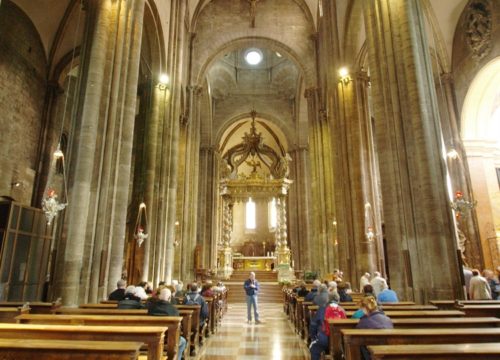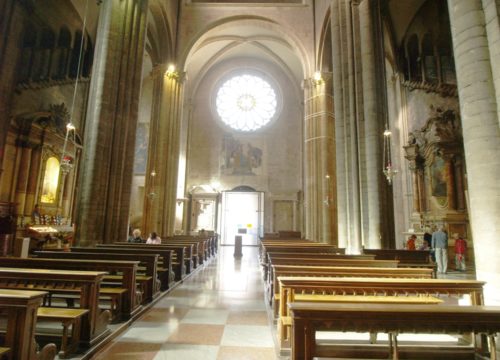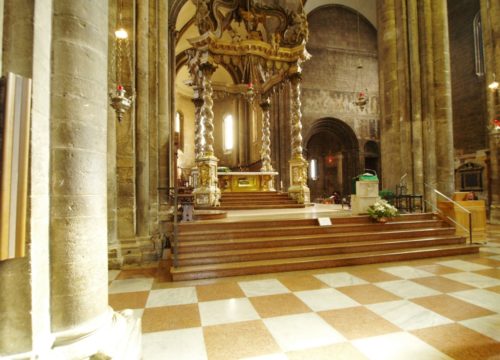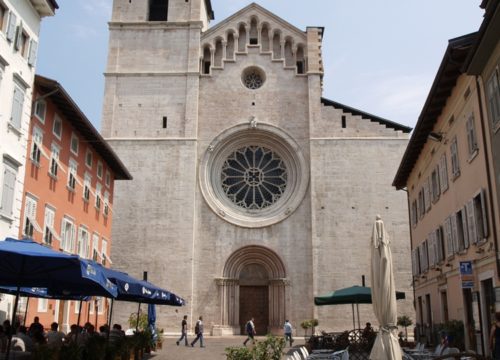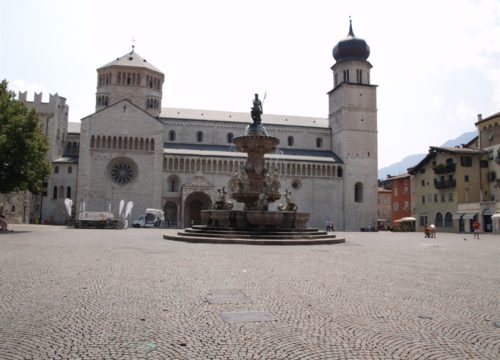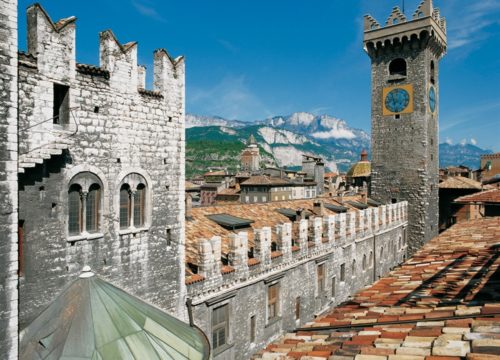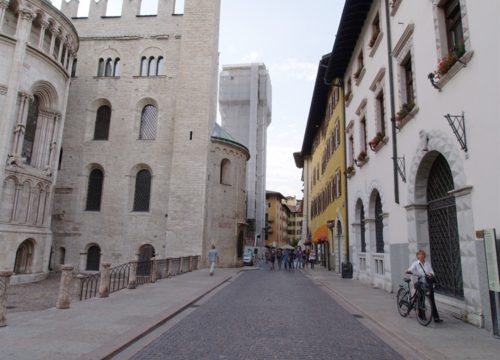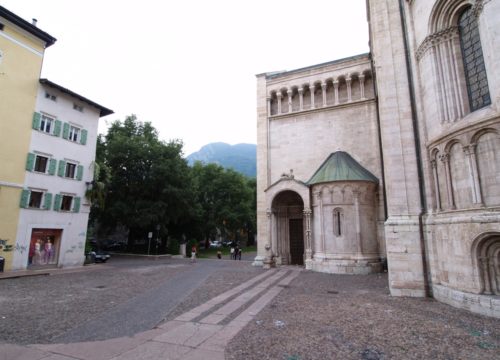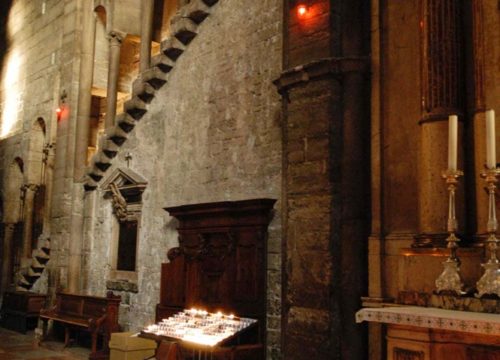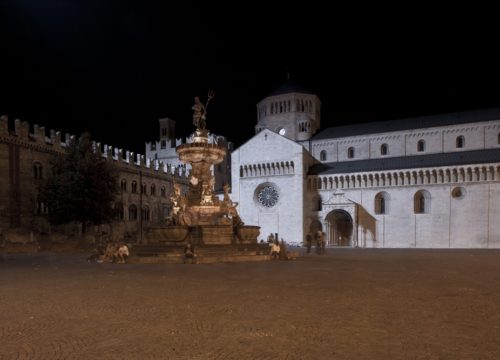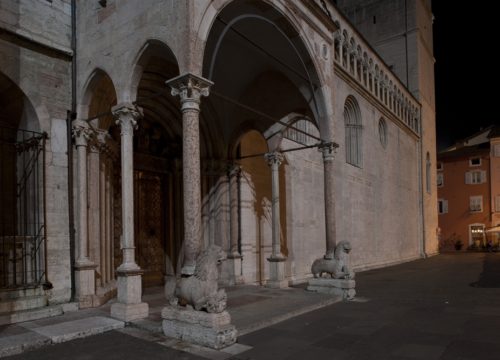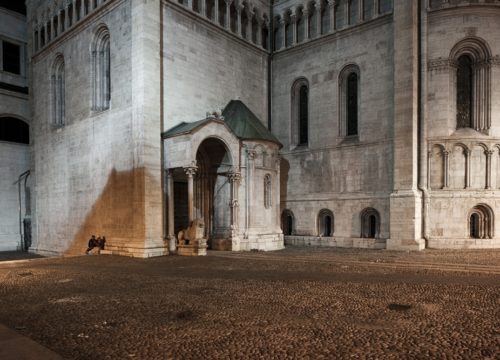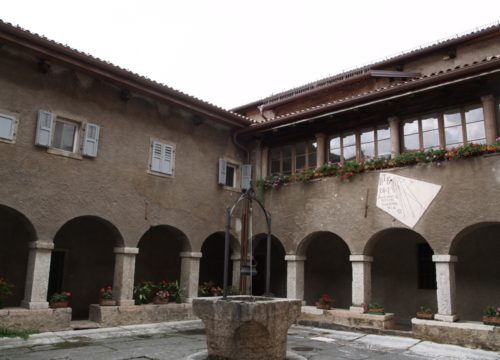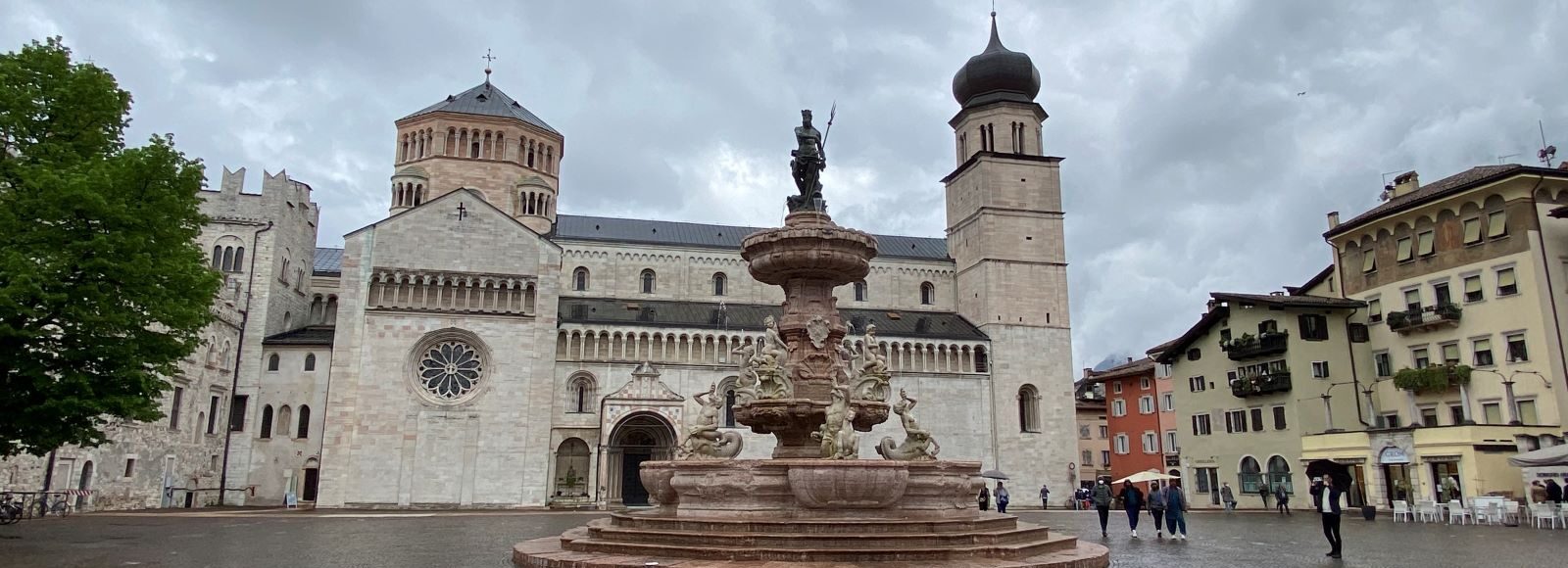
Trento Cathedral
The Cathedral of Saint Vigilius in Trento was built where there was once an ancient temple dedicated to the city’s patron saint.
Prince-Bishopric Uldarico II inaugurated the Cathedral, although the building was demolished almost entirely in 1212 to make room for the new Romanesque-Lombard-style cathedral ordered by Federico Vanga, one of the bishops that contributed most to the urban and artistic development of the city. The bishop entrusted the project to local workers led by Adamo d’Arogno. At the end of the 13th century, the northern transept was decorated with an allegorical rose window known as the Wheel of Fortune.
In the 14th century, the cathedral was extended and gothic features were added. In 1628, Giuseppe Alberti added the Crucifix Chapel, a Baroque structure that houses a group of wooden sculptures, at the feet of which the decrees of the Council of Trent (1545-1563) were once issued. Solemn Catholic services were actually held in the Cathedral’s austere presbytery, on a special mobile wooden structure built over the underground crypt.
The Cathedral’s Medieval features include the rose window in the façade overlooking the main square, and the Cathedral’s apse has an unexpected treasure trove of shapes and decorations. Unusual additions are the two interior side staircases, carved into the walls that reach up to the bell towers at the top of the façade.
accessibilità limitata
SIMILAR LOCATIONS
Discover locations similar to the current, based on their location or tags.
-
Vigo di Fassa
-
Trento
-
Trambileno
-
Coredo

